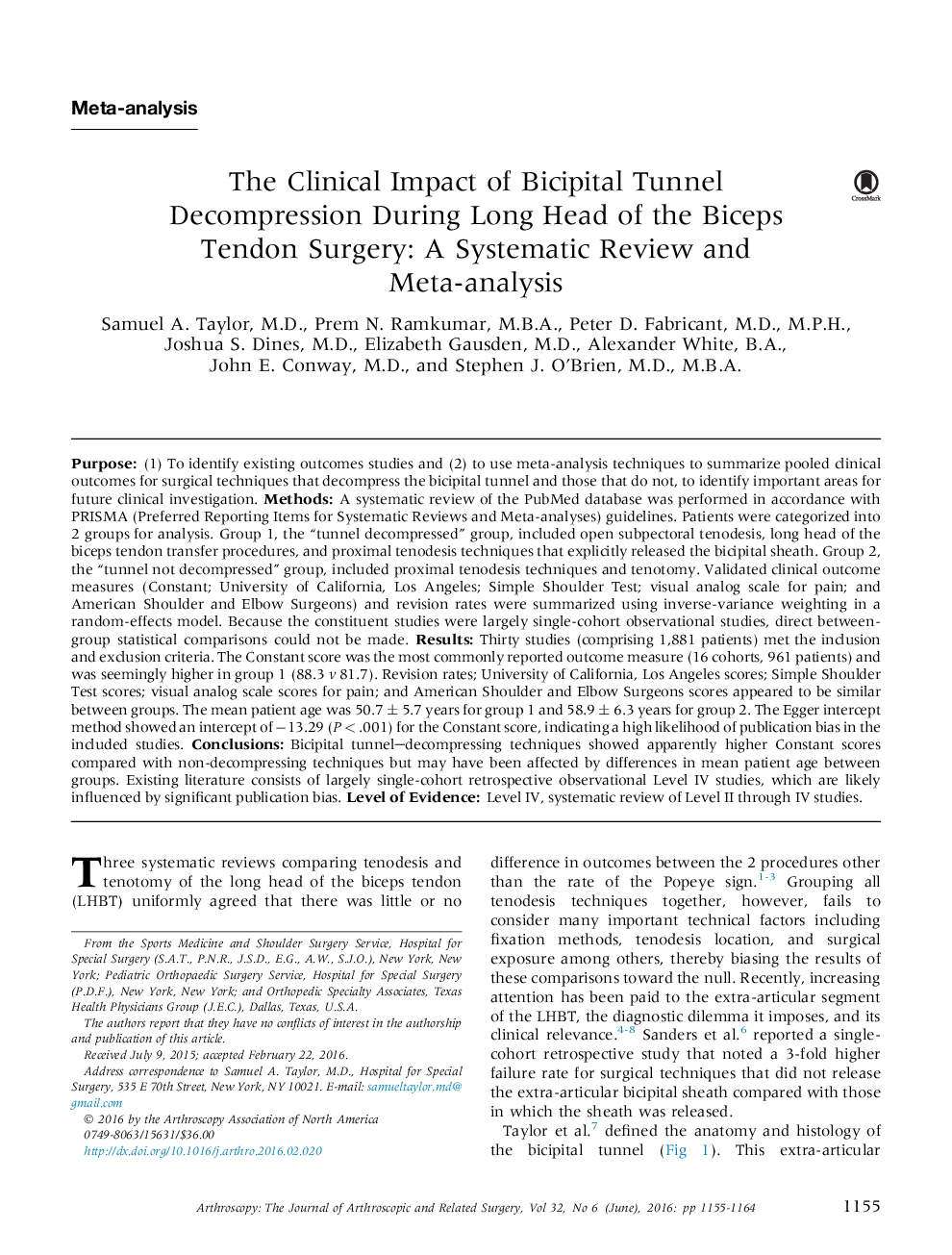| Article ID | Journal | Published Year | Pages | File Type |
|---|---|---|---|---|
| 4041857 | Arthroscopy: The Journal of Arthroscopic & Related Surgery | 2016 | 10 Pages |
Purpose(1) To identify existing outcomes studies and (2) to use meta-analysis techniques to summarize pooled clinical outcomes for surgical techniques that decompress the bicipital tunnel and those that do not, to identify important areas for future clinical investigation.MethodsA systematic review of the PubMed database was performed in accordance with PRISMA (Preferred Reporting Items for Systematic Reviews and Meta-analyses) guidelines. Patients were categorized into 2 groups for analysis. Group 1, the “tunnel decompressed” group, included open subpectoral tenodesis, long head of the biceps tendon transfer procedures, and proximal tenodesis techniques that explicitly released the bicipital sheath. Group 2, the “tunnel not decompressed” group, included proximal tenodesis techniques and tenotomy. Validated clinical outcome measures (Constant; University of California, Los Angeles; Simple Shoulder Test; visual analog scale for pain; and American Shoulder and Elbow Surgeons) and revision rates were summarized using inverse-variance weighting in a random-effects model. Because the constituent studies were largely single-cohort observational studies, direct between-group statistical comparisons could not be made.ResultsThirty studies (comprising 1,881 patients) met the inclusion and exclusion criteria. The Constant score was the most commonly reported outcome measure (16 cohorts, 961 patients) and was seemingly higher in group 1 (88.3 v 81.7). Revision rates; University of California, Los Angeles scores; Simple Shoulder Test scores; visual analog scale scores for pain; and American Shoulder and Elbow Surgeons scores appeared to be similar between groups. The mean patient age was 50.7 ± 5.7 years for group 1 and 58.9 ± 6.3 years for group 2. The Egger intercept method showed an intercept of −13.29 (P < .001) for the Constant score, indicating a high likelihood of publication bias in the included studies.ConclusionsBicipital tunnel–decompressing techniques showed apparently higher Constant scores compared with non-decompressing techniques but may have been affected by differences in mean patient age between groups. Existing literature consists of largely single-cohort retrospective observational Level IV studies, which are likely influenced by significant publication bias.Level of EvidenceLevel IV, systematic review of Level II through IV studies.
